Thought Leadership Studio Podcast Episodes:
Jim Harris Interview - Disruptive Innovation Speaker and Best Selling Author
Episode 20- Insights from best selling author, keynote speaker, and master of disruptive innovation Jim Harris.
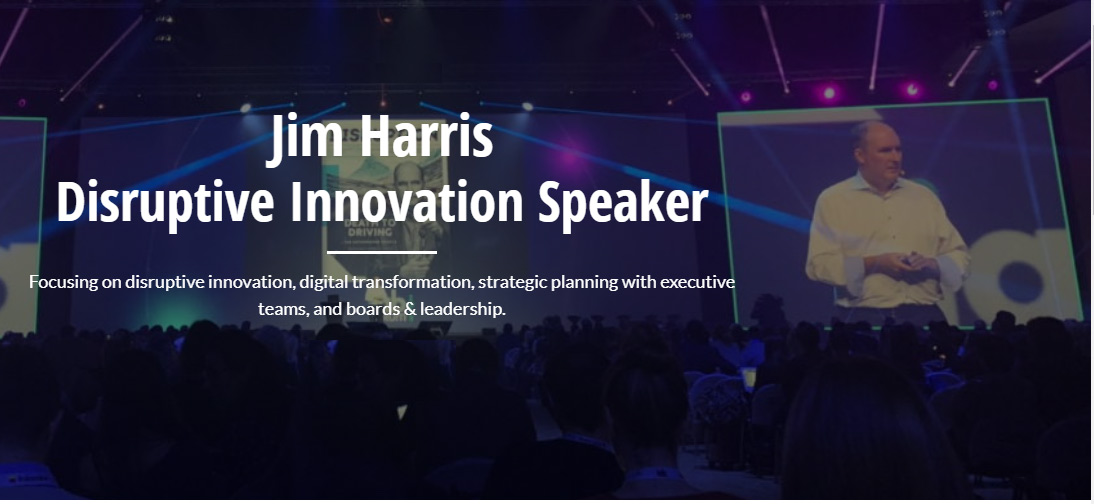
#authors, #insight, #interviews, #leadership, #marketresearch, #paradigmchange, #paradigms, #paradigmshifts, #tesla, #thoughtleadership, #thoughtleadershipexamples, #thoughtleadershipmarketing, #writing
Or Click here to listen or subscribe on appWhat this episode will do for you
- Learn from best selling author and keynote speaker, master of disruptive innovation Jim Harris.
- Gain insight into predicting upcoming trends.
- Learn disruptive innovation as a guiding principle. Be the disruptor instead of being disrupted.
- Better see opportunities in advance.
- Assess whether a particular possible future is a good bet.
Jim Harris, Best-selling Author and Keynote Speaker.
Jim Harris is the author of multiple books, including Blindsided, The Learning Paradox, and The 100 Best Companies to Work For in Canada.
Following are curated excerpts from the interview with Jim Harris, lightly edited for clarity. (listen to podcast for the full interview)
Jim Harris' Background and Accomplishments
Chris McNeil: So I'm sitting here with Jim Harris, number one international bestselling author and columnist, and a disruptive innovation thought leader and keynote speaker, author, and a guy who's been great at predicting future trends. Great to have you here, Jim.
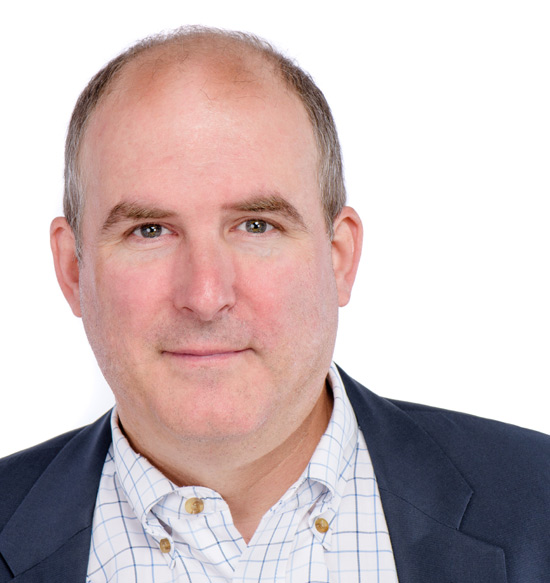 Jim Harris: Yeah. Great to be on the show, Chris.
Jim Harris: Yeah. Great to be on the show, Chris.
Chris McNeil: Fantastic. And I want to start with a bio. What can you tell our audience about what you've done and what you've learned in doing that?
Jim Harris: Sure. Well, I began my career as a journalist. So I wrote a book, The 100 Best Companies to Work For in Canada, and it was a national best seller. So that was more than 30 years ago. And that then prompted people to start asking me to speak at their conferences. So what did the best companies have in common on strategy, on employee engagement on, pay, on benefits?
So that began my career on the professional speaking circuit. And then I connected with a guy called Dr. Steven Covey, who wrote The Seven Habits of Highly Effective People. And for six years I represented the Covey Leadership Center teaching the seven habits. And then Steven brought out Principle Centered Leadership and First Things First. So I was deep into Covey leadership theory and teaching.
And then I brought out my second book, called The Learning Paradox. And it looks at how 80% of the technology that we will use in our day to day lives in just 10 years hasn't been invented yet. So, my job security is based on learning, changing, and accepting uncertainty and what we tend to fear most as adults is learning, changing and uncertainty.
So that book, is called The Learning Paradox because paradoxically our job security as individuals and organizational security is based on always changing, always learning, always improving, and that creates discomfort. We have to get out of our comfort zone. So that was the second book.
And then the third book, called Blindsided, looks at how companies and entire industries are caught off-guard. So today Tesla is worth more than the 17 largest legacy auto companies combined.
Chris McNeil: That's crazy.
Telsa and the Electric Car Revolution
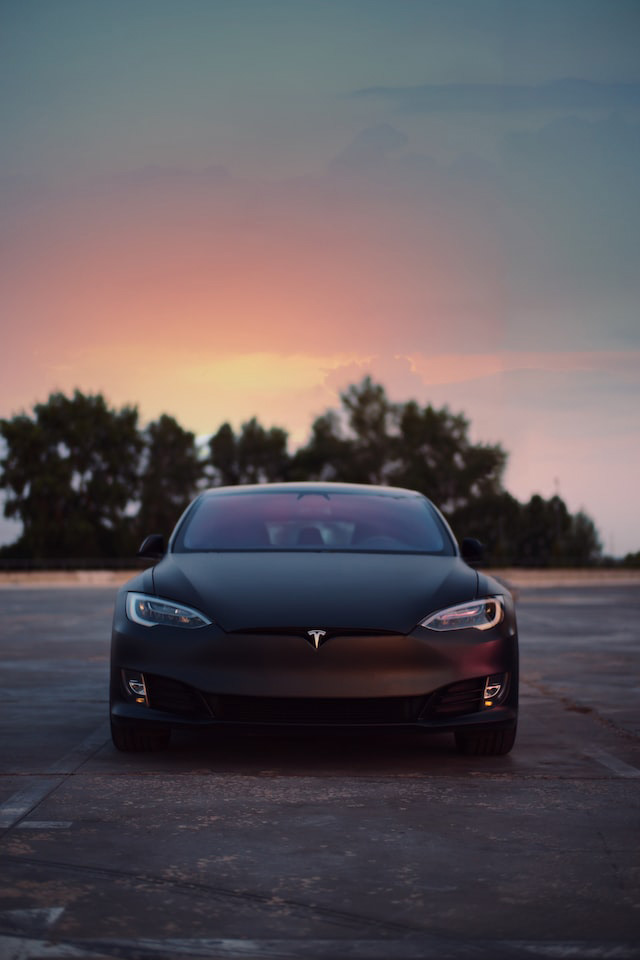 Jim Harris: So you take them all together and Tesla's worth more. So if you don't think that electrification and autonomous vehicles are gonna change the $10 trillion transportation industry, I mean, that statistic is for you.
Jim Harris: So you take them all together and Tesla's worth more. So if you don't think that electrification and autonomous vehicles are gonna change the $10 trillion transportation industry, I mean, that statistic is for you.
And so my work today and for the last couple of decades has been working with companies and industries around:
What are the disruptive trends that will impact their business model? How can they identify them before they're disrupted?
What systems and structures can they put in place inside their organization that are early warning systems?
What systems internally help them continually evolve and change, not just their product, but their business model and how they work?
In other words, you get to choose one of these two, be disrupted or disrupt. Which would you prefer? And if you're choosing to disrupt others, you have to be continually evolving, improving.
So technology is part of this because technology enables disruption, but a bigger component and where the rubber really hits the road is engaging people. It's having a culture of continuous learning and continuous improvement.
Overcoming the Pull to the Familiar
Chris McNeil: That's awesome. And you're fighting against the, maybe the largest human drive, at least according to some: The pull towards the familiar.
Jim Harris: Yes. So there is a pull towards the familiar on one sense and yet, you know, kids, like if you give them a video game and they master it too quickly, they throw the game away as a boring game. So in one sense we need stability, predictability, and a sense of comfort of knowing we know what's going on, but at the same time, if we've been doing that for 30 years, we get bored.
So we need to continually spice up our life by introducing some level of disruption interruption. So, personally I have a philosophy of what 25% of everything we do will be totally different this year, from last year.
And so this applies to me personally, and to the company on a company wide basis. So am I engaged in new things? they might not be new in society in general, but they're new for me or they're new for the company.
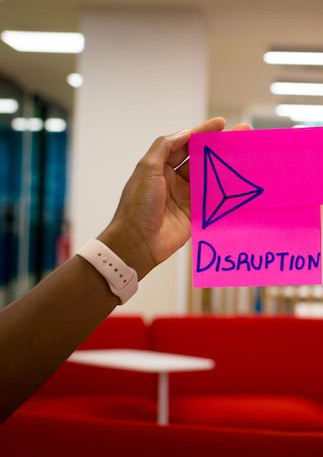
Disruptive Innovation as a Guiding Principle
Chris McNeil: So this (adding disruptive innovation) is a driving (guiding) principle for you then?
Jim Harris: Yes, this has become a principle. What new education am I continually engaged in? ...whether that's very formal education, like going to a course or informal like you and I are spending time together today.
So am I engaging with people with a mindset of always learning and then applying it?
How do I apply what I've learned today to the company, or to my business model?
Seeing Opportunity in Friction
Chris McNeil: So that's fascinating to me. I'm fascinated by learning in general and that the rate of change is so fast. Now, if you're not immersed in learning in some direction, and of course the types of people that we speak to, the types of people I work with...
...I do consulting and coaching in Thought Leadership, and the kinds of people that are attracted to this podcast are wanting to drive change.
One of the things on my list to ask you is how much of driving change comes from insight as to what's coming up and how much comes from imagination and creating the impact from within of envisioning something different and bringing it about?
Or what kind of mix is there for you?
 Jim Harris: You know, when I charge things to my credit card, I only see what the charges are in a month's time when the statement comes, but if I'm on the road, I don't even see the statement. And so if there's a problem, I can't even see it and it'll go by and I get charged for something that I really didn't do. And I can't say, Hey, this is fraudulent, but once you sign up to Google pay and you put your credit cards into Google pay, the notices are instant - like, I see, "Oh my God, this was just charged. And this isn't mine. I didn't charge this."
Jim Harris: You know, when I charge things to my credit card, I only see what the charges are in a month's time when the statement comes, but if I'm on the road, I don't even see the statement. And so if there's a problem, I can't even see it and it'll go by and I get charged for something that I really didn't do. And I can't say, Hey, this is fraudulent, but once you sign up to Google pay and you put your credit cards into Google pay, the notices are instant - like, I see, "Oh my God, this was just charged. And this isn't mine. I didn't charge this."
And so it shortens the cycle time on learning. And I can more accurately predict when they're a fraudulent charge somebody's trying to, or I can flag it and say to my business manager, Hey, did, did you try and charge this?
Or we end up subscribing to all sorts of services and we forget, we subscribe and we're not using it anymore, but every month, $25 is charged to your account and you go, "Oh my God, I'm not even using that anymore. Fricking cancel the thing." But if it's on a statement and I never see it, or Heather sees it his is a problem. So how do I shorten the cycle time?
And this is something that is an enhancement. So what is the classic fear or frustration? Hey, I go on paying something forever and, you know, five years later I canceled the subscription, but in the meantime, I've paid $25 a month for five years. That's a huge waste of money, you know, and it's below the threshold, but if I can see it instantly, I go, Hey, what the hell? Ah, just cancel that.
So all of a sudden, something that I never knew, I needed real time instant feedback on my expenses is something that is of huge value. So if you wanna really innovate around products, services, business models, look to your own fears and frustrations in your life.
Chris McNeil: So where there's friction there's opportunity.
Jim Harris: Oh, absolutely. If you're an entrepreneur, just look at your own life. Similarly, look at where do you go? For instance, I began using Zoom in 2019 and then the pandemic hits and everybody begins using Zoom. Well, when everybody begins using Zoom, if you'd bought the stock of zoom, at that point, you would've had real zoom in the equity that you had in the company.
So one of the things, if you just look to your life, is what are the things that people are excited about if you're taking it from an investment perspective? So, a colleague of mine was a very early adopter and we were working together and he was raving about his smartphone, which was an apple iPhone. This was the iPhone one.
Seeing Trends in Raving Fans
 Jim Harris: Well, you know, how, how often do people rave about their iPhone?
Jim Harris: Well, you know, how, how often do people rave about their iPhone?
Well, you look at it and this guy is just a raving maniac about the iPhone. Well, this might be a good indicator that this has something. Or if you ever talk to a Tesla owner, they just rave about their car. Now I'm not talking about reading the press. I'm talking one-on-one, talk to your friends who own the Tesla, and are they maniacs in talking like, will they talk to you for hours about their Tesla?
I was reading about one policeman who, they bought aTesla for their police force. They'd bought just one. And then they found out they were saving $7,000 a year in fuel cost and maintenance. So I went, wow, seven grand a year, you know, after five years, it's a free car for us. Like the reduction in operating expense equals the capital expense of buying the things.
Chris McNeil: Sure.
Jim Harris: So then they went to two and now they have seven on their police force and it's not a big police force. So soon every vehicle and this police chief stops some guy for speeding. Okay. And all the guy wants to talk about is the Tesla (laugh) - he's not upset. He's getting a ticket, right. He's just like, tell me about your Tesla and your savings and what's this. And what's that. So like, clearly if people are early adopters and they're very excited about something,: what is it about like people don't rave about their regular, plain, old gas car, ... what are they doing? They're complaining about gas prices.
Chris McNeil: Sure.
Jim Harris: So, you know, what is the sentiment of people who are early adopters? Are they raving fans? And if that's the case, that's an, that's not a guarantee, but it's an indicator of a shift that's coming...
Chris McNeil: .. an organic brand ambassador movement.
Jim Harris: Exactly.
Chris McNeil: So it's knowing how to have "eyes to see" early on so there's an opportunity...
Jim Harris: Exactly. So I, back in 2004, I bought a Prius, uh, which is made by Toyota, which was a hybrid. So it was a gas electric. And it cut my cost of fuel by 50% from my prior car. And so the car cost me $30,000 to buy in '04 And I owned it for 17 years. And over the 17 years, it saved me $35,000 in gas.
Chris McNeil: Wow.
Jim Harris: Exactly. So I, back in 2004, I bought a Prius, uh, which is made by Toyota, which was a hybrid. So it was a gas electric. And it cut my cost of fuel by 50% from my prior car. And so the car cost me $30,000 to buy in '04 And I owned it for 17 years. And over the 17 years, it saved me $35,000 in gas. So, some people at the time I bought it said, "Jim, you know, Aw, that's stupid. They cost more. "And okay, whatever it cost at the time - about four grand, more for an equivalent car, but it saved me $35,000.
So the OPEX saving was greater than the CapEx. So, uh, over the long run, it was, was a very wise investment. Now, if you were buying one today and you can't because you can't get cars very quickly because of supply chain problems. But the payback would've been, uh, far, far faster, because the cost of gas has been so high. So, you know, that's, would've even been a faster payback if it had been today and that same calculus exists on the electric vehicles.
Which the police department we just talked about was a brand ambassador, an unpaid brand ambassador for Toyota for 17 years. And now I am an anti Toyota brand ambassador because Toyota has been lobbying against EVs.
Chris McNeil: I noticed that.
Jim Harris: So I have only been saying nasty things about Toyota because they're off-side on the EV revolution. And, really the reason they're doing it is they're the number one in the world on hybrids. So, you know, they're talking about hydrogen, which is stupid for the ... there are certain niche applications fine, but not for the general transportation market.
So I've gone from a hugely positive brand ambassador. Like I've, I've spoken about Toyota in thousands of interviews over the last 17 years to being a huge critic of the company. So what you do - your corporate ethos or philosophy - will have an impact on your adoption. So, every chance I get within a reasonable context saying negative things about Toyota.
Chris McNeil: Isn't that amazing how much losing the plot can cost good will.
And you brought up another point. This is fascinating to me - it is what I would call a reframe of from purchase cost of a car, to full ownership cost of a car. Where electric cars stand out, of course is the long term ownership cost.
And that's the kind of thinking reframe that maybe sometimes has to accompany an innovation. I know it can happen organically or maybe it can be helped along through a strategic leadership of the marketplace and helping people reframe their thinking.
Jim Harris: So this was interesting. The normal car drives, you know, 10,000 miles a year, something around that. Uh, but taxis or Uber vehicles or Lyft are really high use vehicles. And if you have a Lyft or Uber or taxi driver, who's driving full time, whether that's five or seven days a week, um, they'll they can do a hundred thousand miles a year. And if you're doing a hundred thousand miles a year, the payback on a hybrid isn't 17 years that I had it's two and a half fumes.
So imagine you brought buy a brand new vehicle, you cut your gas usage in half, but because you're driving so much, you're paying less at the pump. Or if you move to an EV you're paying 70% less by charging with electricity. Sure. You buy a big honk and battery. So you have lots of range and you're driving.
You charge every single night at home, not at a supercharge, you pay far less at home than you do a supercharge. And all of a sudden your payback on a brand new Tesla model three, your model, Y can be two, two and a half years, right?
Like imagine getting your car for free in fuel savings as a Tesla model, three model Y owner. Like that's incredible, but nobody, uh, like people look at the upfront cost, not the total life cycle cost or in a computer model, like you'd call it an IT department would call it total cost of ownership. Sure. So not only is your fuel cost significantly lower, your maintenance cost.
Chris McNeil: I wrote a piece about Tesla a couple months ago because there's such a strong example of marketing a company entirely through innovation and thought leadership. In a way, I see thought leadership as just the intersection of innovation and marketing. Tesla has a $0 ad budget, but they do things so differently, it just organically generates exposure and press.
Jim Harris: Yeah. So Tesla has no PR department. So if you're a journalist, which I am, you, you can't ever reach Tesla to do stuff. So that's frustrating. So you have to have people, you know, friends on the inside.
On Knowing If a Possible Future is a Good Bet
 Chris McNeil: And one question I had for you is how, how do you sense when it's the right direction, the right hunch?
Chris McNeil: And one question I had for you is how, how do you sense when it's the right direction, the right hunch?
Before Tesla, there wasn't any electric cars that a lot of people felt were worth owning. There were electric cars, but none of them that could stand up with Mercedes or BMWs or even the Hondas at that time. That was, until he brought out the model S and that completely changed the paradigm. Obviously that has worked out.
And I remember how many years Amazon lost money, but they attracted enough VC money to keep it going. But how do you sense when this is a good bet - that this is a risk, but it's the right risk.
Jim Harris: So one of the things that you need to look at is the underlying cost curves or cost structures. So the one we know best is Moore's law, that the processor power will double every 18 months while staying at the same price point. And it was Gordon Moore, who was the co-founder of Intel who posited this law in 1965. And what it means is practically that - back in the early seventies - an Intel chip had 2000 transistors on it. And today's chips from many different companies have 50 billion. I feel like Dr. Evil! 50 billion chips!
So this is a shift that has profound consequences. One measure of compute speed used to be a giga flop, and a giga flop is doing a billion calculations in a single second. So in 1961, a giga flop was $164 billion on mainframes. And today a giga flop is a single cent. And that's like so 2022 a figure. Sure. Cause it's going down from there. And what that means is compute power is free and it's at the edge... Meaning it's on my smartphone. It's not on a data center, right? We still have data centers, but so much compute power is done at what's called the edge, right?
So this changes business models. And it means that if your company isn't mobile first, meaning putting mobile at the center of your marketing strategy, you're not reaching the super computer in the hip pocket or purse of all your customers and your suppliers.
So you are missing the boat because my smartphone, which is worth about a thousand dollars has more raw computing power than IBM's deep blue, that beat Gary Casper in chess in 1997. Sure. And that was a hundred million dollar project. So if I choose not to be mobile first: if my website, for instance, isn't designed to be mobile first, I'm not reaching my customers effectively.
The reason that's happened is because the decline in cost of computing.
On Tesla and Declining Battery Costs
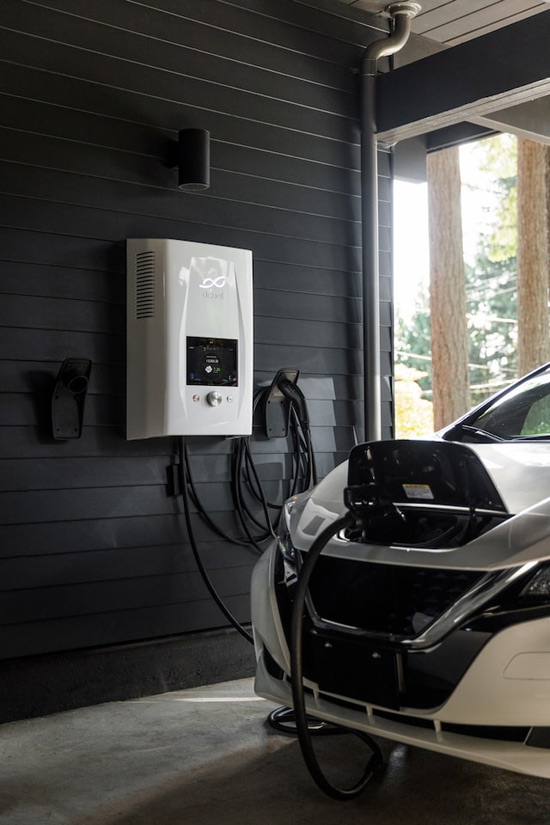 Jim Harris: So from the point of view of Tesla, the dominant metric is the price of lithium ion batteries. So, if you go back to 2010, the cost per kilowatt hour of lithium ion was about $1,200.
Jim Harris: So from the point of view of Tesla, the dominant metric is the price of lithium ion batteries. So, if you go back to 2010, the cost per kilowatt hour of lithium ion was about $1,200.
That's in per kilowatt hour of battery and that's in 2020 constant dollars. So adjusted for inflation back now to 2021, uh, the price is $120.
So from $1200 to $120, that's a 90% reduction. Now, if you study cost curves and you're Elon Musk, and you see this continually declining cost curve, just like in like Moore's law, you can say, Hey, why don't I start building an EV company because the batteries are gonna get cheaper every single year.
Which means the cost of an EV is gonna get cheaper every single year.
So I'm gonna start by buy building a very high end Roadster because the batteries are very expensive in 2010 at $1,200 per kilowatt hour. So we need to have a quarter million dollar car in order to justify because 80% of that car cost is gonna be these really expensive lithium ion batteries, but they're going to get cheaper every single year.
And then we'll build, you know, not a quarter million dollar car, we'll build $120,000 model S and then we'll build $160,000, big honking SUV, the model X.
Sure. And then we'll build a really inexpensive, small model S we'll call that the model 3, and then we'll build a crossover. That's a mini X, but doesn't have gull-wings - and call that the Y. And now the Model Y in 2022 will be the best selling car in the world by dollar volume, not by unit volume.
But by dollar volume, right. Because really EVs are still more expensive. But that declining cost curve on the battery cost is, uh, you know, Elon during battery day in 2020 said that the plans that Tesla have will drive the cost of batteries down by another 50%.
So at that point in time, we end up having EVs cheaper than gas cars to buy, not just total life cycle cost. Sure. But on CapEx and on OPEX, they're already cheaper on OPEX.
And at that point, we end up having the legacy automakers fall off a cliff. Well, now people think things are either black or white, they're either on or off, you know, Jim you're telling me that everything's gonna be EV no, no, no, no, no.
Even if we had a hundred percent EV sales this year, we'd still have, you know, millions of legacy gas cars, right? Sure. Like Norway, Norway this year will hit a hundred percent new EV sales. I, by December, I think no, 91% of all new car sales in Norway in January were plugins. So I think this year by December, we'll hit a hundred percent.
Now, some of those are plugin hybrids, so they still have a gas component, but, uh, about 70% of all those plugins are pure EVs.
What's Coming Up? Future Disruptions to Look Out For
Chris McNeil: Speaking of an opportunity, what do you see coming up that most people don't see? I think most insightful people in business now are seeing the electric car trend. They're seeing this gonna be a lot of disruption for car maintenance shops over time. That's going to take a while, but it will happen - if they don't reinvent themselves, they're gonna be in trouble at some point.
But what else do you see that we should know about that maybe most people don't see yet?
Jim Harris: Well, there will be many disruptions. I gave a talk in 2017 about Telsa and disruption, it's up on YouTube. It's something called Idea City.
But if you look really profoundly and you think implicatively, there are going to be many things that are disrupted. So let's take, for instance, 94% of car accidents are due to driver error. So when we have EVs - once you have EVs, you can have autonomous vehicles. So you can have autonomous safety vehicles. So safety increases. And in fact, this is already the case. The US government measures number of accidents per million miles traveled and Tesla has 85% fewer accidents per million miles because of all the autonomous features on them.
Chris McNeil: Sure.
Jim Harris: And we don't even really have, level five ,autonomous, full, self-driving vehicle. So this is huge because think about the 40,000 people who won't be killed every year on American roadways: isn't this great? And think about the 2.5 million people who won't be permanently maimed right? This is great.
But if you sell auto insurance, like what's gonna happen when we have no more car accidents or we have 94% fewer car accidents, what happens to the auto insurance market? Well, do you know that Tesla because they have 85%, fewer accidents has gone out to its Tesla owners in starting in California and said, Hey, you can get insurance from Tesla for 20-30%, less than a traditional insurance company. Now they can do that because they know the accidents are 85%, fewer per million miles.
Chris McNeil: That's interesting.
Following the Domino Stack
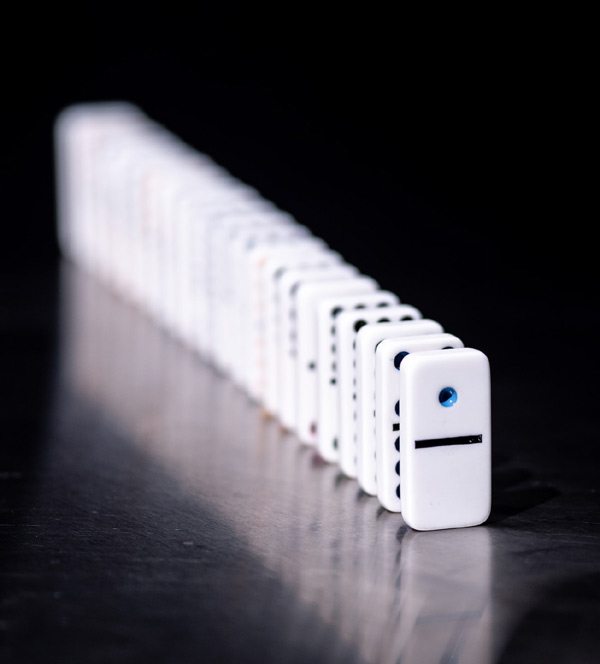 Jim Harris: Okay. Now, does that mean that Tesla is going to disrupt the insurance industry? And what about parking? Do you know that we only use our cars 4% of the time, like that is a horrific asset utilization rate.
Jim Harris: Okay. Now, does that mean that Tesla is going to disrupt the insurance industry? And what about parking? Do you know that we only use our cars 4% of the time, like that is a horrific asset utilization rate.
So imagine I buy a Tesla with full self-driving level five. We don't have that yet, but imagine we do - and rather than pay $45 today to park in the downtime, financial core, I say to my car, Hey, go forth and earn your keep.
And I put it into Uber or Lyft's autonomous pool to go around, drive around all day and make me money rather than pay $45 a day to park in the downtown core.
And then at 4:30 before I want to go home, I call my car and say, don't take any more rides. Come pick me up. So my car is making me money rather than costing me money. Now what happens to parking lots? Right?
McKinsey says we have 60 billion square feet, too much of parking given the rise of autonomous fleets. Right? So what happens to parking lots? What happens to the revenue stream for parking lots? How do I short parking lots in my stock portfolio?
So, I'm not an investment advisor and I don't really know how to short parking lots, but these are just the kind of implicative questions. If we have 85% fewer accidents, do we have too many ambulances?
Chris McNeil: Well, you seem to be following the domino stack.
Jim Harris: Exactly
Chris McNeil: You follow down the line. There's so many ...
Jim Harris: This is brilliant. What is the domino stack for EVs?
How to Disrupt Instead of Being Disrupted, Plus on Writing Books
Chris McNeil: Right? That's going to change. And that brings me to what would be your advice for those about to be disrupted for those stuck in the comfort zone, for those who fall prey to the natural pull, to the familiar, how to wake themselves up to being an agent of change?
Or to at least preemptively reframe their whole business to take advantage of change instead of being disrupted by it?
Jim Harris: Well, and you also talked about earlier about writing a book, so I'm gonna answer both questions with one answer. So if you wanna write a book- Blindsided, which is behind me, right: it is about a 100,000 words. And, uh, you know, The Learning Paradox right here is about a 100,000 words. If you're going to write a 100,000 words, that's a daunting task to begin with. So don't write a 100,000 words, write a 10,000 word article. If 10,000 is too daunting, write a 1,000 word article, start somewhere, uh, you know, write 10 1000 word articles on different topics. And there you have the kernels of what are 10 chapters.
 Now turn each of those 1000 word articles into a 10,000 word article. If you have 10, 1000 word articles, you've just written a book, okay? You sew them all together.
Now turn each of those 1000 word articles into a 10,000 word article. If you have 10, 1000 word articles, you've just written a book, okay? You sew them all together.
You update them, blah, blah, blah. So in the same way with how do we create change in our organization? You're not gonna become a disruptive company, you know, on day one. That's like saying me saying, I've never exercised, but today I'm gonna go run a marathon. That is problematic. Okay. Why don't we start by walking around the block? So just four edges of the block. Now, why don't I walk around two blocks? So I've done six sides. How about eight blocks? How about I run one block or I walk one block. I run one block. I walk one block, let's build it up.
Now I'm running, you know, one block walking, one block running, one block walking, one block, you know, I'm building it up. So in the same way with innovation, let's start by baby steps on innovation. Let's just improve our customer service.
You update them, blah, blah, blah. So in the same way with how do we create change in our organization? You're not gonna become a disruptive company, you know, on day one. That's like saying me saying, I've never exercised, but today I'm gonna go run a marathon. That is problematic.
Why don't we start by walking around the block? So just four edges of the block. Now, why don't I walk around two blocks? So I've done six sides. How about eight blocks? How about I run one block or I walk one block. I run one block. I walk one block, let's build it up. Now I'm running, you know, one block walking, one block running, one block walking, one block, you know, I'm building it up.
So in the same way with innovation, let's start by baby steps on innovation. Let's just improve our customer service.
Let's get our people used to improving our product. Let's test and play and tinker and toy on the edge of our business with our business model. You know, we're, we're taking little steps and we go, Hey, this is kind of fun. And we develop the chops for innovation and then, Hey, let's have more aggressive goals.
Let's improve more. Hey, let's dedicate revenue to training every single person in the organization about what is innovation? Why is innovation so important? How do we innovate? What are different tools around innovation? When I represented Covey - we talked about him at the top of the podcast - you know, Covey who wrote the Seven Habits of Highly Effective People, very strongly believed you had to train every single person in the seven habits to create a cultural change in the company.
And it is the same around innovation.
(Above is just a few curated and lightly edited snippets from the interview. Listen to the podcast for the full interview.)
***************************************
Free Stuff and Offers Mentioned in Podcast
***************************************